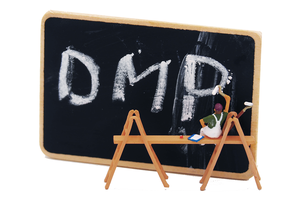Cessda expert tour guide
I’d say I am a rather organised person
I’d say I am somewhere in between
I’d say I am rather disorganised
Your answer: I’d say I am a rather organised person
Congratulations! You are certainly a data management type of person and you will appreciate this guide. We hope DMEG will be a valuable assistant to your well-organised workflow. In Chapter 2, you will find data management tips and tricks that will certainly improve your skills. And by the way, following our data management recommendations will not only help you in your work but also increase your chances of success in funding competitions.
Your answer: I’d say I am somewhere in between
Well, then DMEG will certainly help you to organise and structure data and documents and to smoothen your workflow. Have a look at Chapter 2, which will show you benefits of using a Data Management Plan (DMP) and will present you the FAIR principles. Following our data management recommendations will not only help you in your work but also increase your chances of success in funding competitions.
Your answer: I’d say I am rather disorganised
You have just found the tool that will take you out of the labyrinth. In this guide, you will find many useful tips and recommendations to organise and structure your data and documents. Using information from Chapter 2 , you will be able to properly organise and document your data and metadata. Moreover, by following our recommendations for using a Data Management Plan (DMP) and FAIR principles you will increase your chances of success in funding competitions.
Q2: Do you know what a Data Management Plan (DMP) is?
Yes, I know exactly what it is
Yes, but I have only a vague idea about what it is
No, I have no clue what it is
Your answer: Yes, I know exactly what it is
Great! Although you know what a DMP is, you may want to know about European diversity concerning DMPs. Check out Chapter 1 Plan and discover DMP requirements in several European countries.
Your answer: Yes, but I have only a vague idea about what it is
We have detailed information about the DMP in Chapter 1 Plan. This chapter will certainly help you expand your knowledge so that you can use the DMP to your benefit.
Your answer: No, I have no clue what it is
A DMP is a formal document that provides a framework for how to handle data and related material during and after a research project. In many European countries, the DMP is necessary when you apply for funding for your project proposal. Have look at Chapter 1 Plan and find out more!
Q3: Have you ever created your own dataset of quantitative data?
Yes, I have
No, I haven’t but I might do it eventually
No, I never plan to do that
Your answer: Yes, I have
Well, then you might appreciate our tips for organisation and (re)naming of variables, coding respondents' answers or changing file formats. You will find all this and much more in Chapter 3 Process.
Your answer: No, I haven’t but I might do it eventually
If you are a researcher or a student who wonders how to process, organise and edit your quantitative data, you will definitely find useful information in Chapter 3 Process. You will learn how to organise and (re)name variables, code respondents' answers, change file formats and much more.
Your answer: No, I never plan to do that
If you ever change your mind, you may find useful tips for creating and editing datasets of quantitative data in Chapter 3 Process. In this chapter, we also have something for qualitative researchers; for example, basic information about qualitative data coding.
Q4: Have you ever heard about FAIR data?
Yes, and I know exactly what it is
Yes, but I have only a vague idea what it is
No, I have no clue what it is
Your answer: Yes, and I know exactly what it is
Although you have a clear picture of FAIR data, you might be interested in related topics such as data documentation and metadata. Find out more in Chapter 2 Organise & Document.
Your answer: Yes, but I have only a vague idea what it is
DMEG will give you a clearer picture of the concept of FAIR data, which means that scientific data should be Findable, Accessible, Interoperable and Reusable. Check out Chapter 1 Plan where there are tips for making your data FAIR.
Your answer: No, I have no clue what it is
DMEG will give you a clearer picture of the concept of FAIR data. which means that scientific data should be Findable, Accessible, Interoperable and Reusable. Check out Chapter 1 Plan and learn why data should be FAIR and how to make it so.
Q5: Do you know how to safely store your data?
Your answer: Yes
Brilliant! However, you can still make use of our tips and recommendations for data storage. You will find them in Chapter 4 Store.
Your answer: No
Then you should definitely look at Chapter 4 Store and check out the tips and recommendations we have put together, plus some easy steps to get started.
Q6: How confident are you that you know how to protect the identity of respondents in your datasets?
Very
Not very
I have absolutely no idea how to protect the identity of respondents
Your answer: Very
That's great! However, this topic is so important that you might want to check out Chapter 5 Protect, where you will find information about key issues such as informed consent, anonymisation, copyright and others.
Your answer: Not very
Then you can certainly make use of Chapter 5 Protect, which includes instructions for how to perform an Ethical Self-Assessment. You will also find detailed information about important issues such as informed consent, anonymisation and copyright.
Your answer: I have absolutely no idea how to protect the identity of respondents
Then you can certainly make use of the DMEG Chapter 5 Protect, which includes a detailed description of the GDPR and how to gain consent for data sharing.
Q7: Have you ever deposited your data in a data archive or repository?
Your answer: Yes
That's great to hear! Sharing data with others is beneficial for the whole community of researchers. As a data depositor, you certainly know how to archive data in the archive, but in case you would like to know more about data sharing and archiving, you will find more information in Chapter 6 Archive & Publish.
Your answer: No
It’s never too late to start! If you want to know how to store your data in a data archive, you will find all the necessary information in Chapter 6 Archive & Publish.
Q8: Have you ever encountered problems while looking for social scientific data for your secondary analyses?
No, I always find what I want very quickly
Yes, but at the end I usually always find what I need
Yes, I am usually lost
Your answer: No, I always find what I want very quickly
You have our respect! In Chapter 7 Discover, we not only provide tips and tricks for finding data but also explain how to assess the quality of data from repositories. Check it out!
Your answer: Yes, but at the end I usually always find what I need
Well, that's reality for many of us. Take a look at Chapter 7 Discover, where you will find useful tips and recommendations for faster and more effective data searching.
Your answer: Yes, I am usually lost
Sadly, your situation is far too common, but we are here to help! Take a look at Chapter 7 Discover, where you will find a detailed description of how to effectively look for scientific data in data repositories and other sources.
Data Management Expert Guide (DMEG)
The DMEG is designed by European experts to help social science researchers make their research data Findable, Accessible, Interoperable and Reusable (FAIR).
You will be guided by different European experts who are - on a daily basis - busy ensuring long-term access to valuable social science datasets, available for discovery and reuse at one of the CESSDA social science data archives.
You can download the full DMEG for your personal study offline (DOI: 10.5281/zenodo.3820473). PDFs for every single chapter are also available for being printed as handouts for training.
See also the pilot interactive game version of the guide!
- Data Management Expert Guide
- 1. Plan
- 2. Organise & Document
- 3. Process
- 4. Store
- 5. Protect
- 6. Archive & Publish
- 7. Discover
- 8. Contributors
Are you here for the first time?
Take the quiz below and find out which chapters of DMEG will be most useful for you.
Take the DMEG quiz
Reload this page to take the quiz again.
Target audience and mission
This guide is written for social science researchers who are in an early stage of practising research data management. With this guide, CESSDA wants to contribute to professionalism in data management and increase the value of research data.
This video is also available on Zenodo. Please cite it as: CESSDA Training Team. (2020). What is the CESSDA Data Management Expert Guide & how can it help you?. Zenodo. http://doi.org/10.5281/zenodo.4569323
Overview
If you follow the guide, you will travel through the research data lifecycle from planning, organising, documenting, processing, storing and protecting your data to sharing and publishing them. Taking the whole roundtrip will take you approximately 15 hours, however you can also hop on and off at any time.
During your travels, you will come across the following recurring topics represented by images:
- Adapt your DMP
- European diversity
- Expert tips
- Tour operators

As the data management plan (DMP) is an important tool to structure the research data management of your project, it plays a central role in this guide. Each chapter ends with a section with questions that are generally to be answered in a DMP. In the chapter's paragraphs you will be presented with the information you need to answer the proposed questions.
We have designed a list of DMP-questions especially for this Data Management Expert Guide. You can view and download the checklist as pdf (CESSDA, 2018a) or editable form (CESSDA, 2018b), and keep them as a reference while you are studying the contents of this guide.

If you see this image, you have landed in a spot where you will learn about European diversity in data management. E.g., think of diversity in:
- Funder requirements in making your Data Management Plan
- Data protection law
- Informed consent
- Ethical review
- The requirements of local data repositories

In each chapter, you will find our expert holding up a hand to give you some tips. These expert tips aim to provide you with food for thought and practical how-to information.

To give you in-depth tips on how to deal with your own specific type of data, chapters may contain examples of how to handle quantitative or qualitative data.
The tour operator on the left showcases expertise in quantitative data management, while the one on the right hand side illustrates qualitative data management.
Seven chapters
The following seven chapters are currently available.
In this introductory tour, you will become aware of what data management and a data management plan (DMP) are and why they are important. General concepts such as social science data and FAIR data will be explained. Based on our recommendations and good practice examples, you will be able to start writing your DMP.
If you are looking for good practices in designing an appropriate data file structure, naming, documenting and organising your data files within suitable folder structures, this chapter is for you.
You will get acquainted with the topics of data entry and coding as the first steps of proper data management. To maintain the integrity of your data we will guide you in choosing the appropriate file format. You will also find out about version and edition management.
To be able to plan a storage and backup strategy, you will learn about different storage and backup solutions and their advantages and disadvantages. Also, measures to protect your data from unauthorised access with strong passwords and encryption will be explained.
This chapter highlights your legal and ethical obligations and shows how a combination of gaining consent, anonymising data, gaining clarity over who owns the copyright to your data and controlling access can enable the ethical and legal sharing of data.
When you arrive at this chapter you will have learnt to differentiate between currently available data publication services. You will also find a number of stepping stones on how to promote your data.
How can you discover and reuse existing or previously collected datasets?
Get started
To get started with the first tour, simply click on the button below.

Project details
The Data Management Expert Guide has been created for CESSDA ERIC by a number of its service providers' experts at: ADP, AUSSDA, CSDA, DANS, FORS, FSD, GESIS, NSD (Sikt), SND, So.Da.Net and UKDS and is illustrated and edited by Verbeeldingskr8. The authors are mentioned by their names in the overview of the relevant chapter(s). DANS led the creation of this expert guide.

Having a background in learning and knowledge sharing, it was a great pleasure to co-ordinate the creation of this Data Management Expert Guide.
LICENCE

The Data Management Expert Guide by CESSDA ERIC is licensed under a Creative Commons Attribution-ShareAlike 4.0 International License. All material under this licence can be freely used, as long as CESSDA ERIC is credited as the author.
CITATION
CESSDA Training Team (2017 - 2022). CESSDA Data Management Expert Guide.
Bergen, Norway: CESSDA ERIC. Retrieved from https://dmeg.cessda.eu/
CONTACT
The Data Management Expert Guide is created for CESSDA ERIC by ADP, AUSSDA, CSDA, DANS, FORS, FSD, GESIS, NSD, SND, So.Da.Net and UKDS and is illustrated and edited by Verbeeldingskr8.







